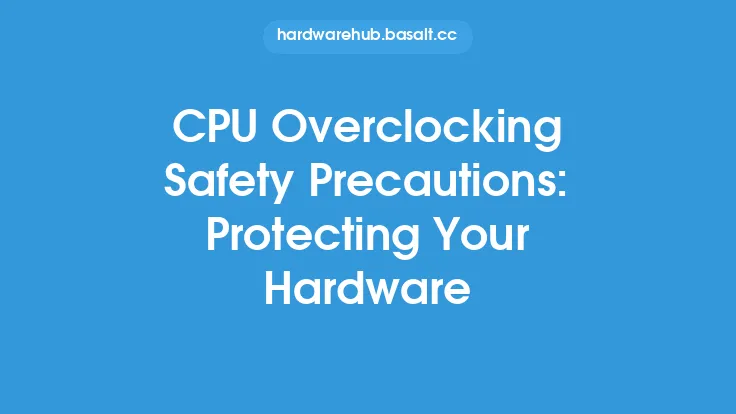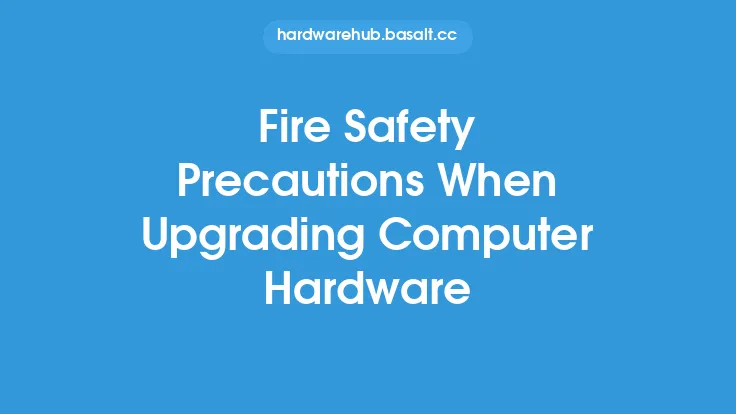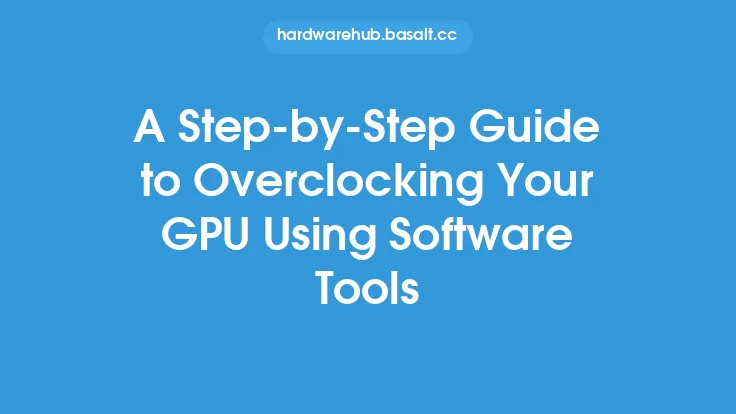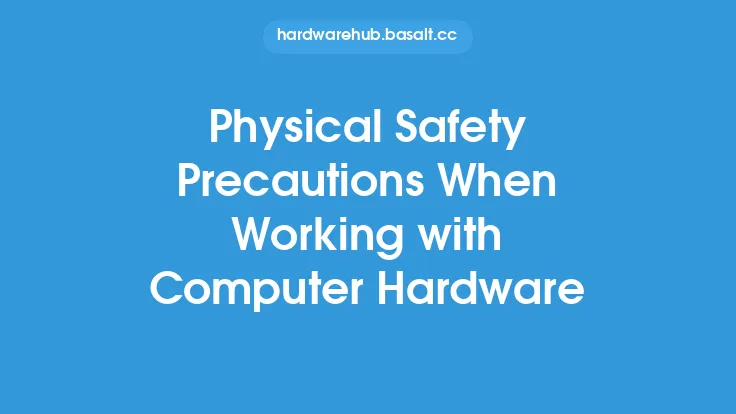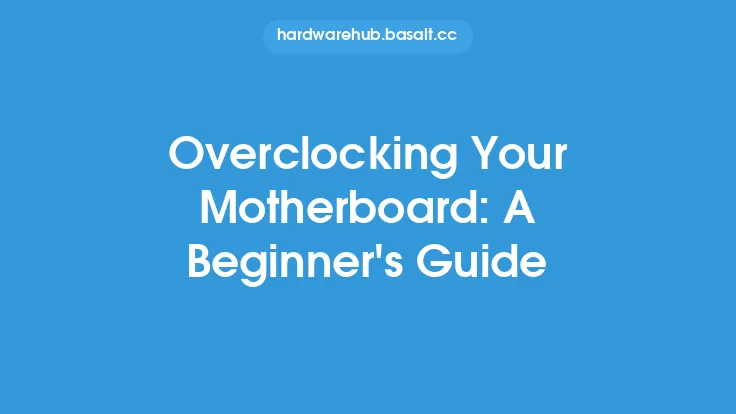When it comes to pushing your graphics processing unit (GPU) to its limits, safety should always be the top priority. Overclocking can be a great way to squeeze out extra performance from your hardware, but it can also lead to damage, degradation, or even complete failure if not done properly. In this article, we'll delve into the essential safety precautions you should take when overclocking your GPU to ensure that you're protecting your hardware and getting the most out of it.
Understanding the Risks of GPU Overclocking
Overclocking your GPU can lead to a range of potential risks, including increased power consumption, heat generation, and voltage stress. When you push your GPU beyond its stock speeds, you're essentially asking it to perform more calculations per second, which requires more power and generates more heat. If your cooling system is not up to the task, this can lead to overheating, which can cause damage to the GPU, its surrounding components, or even the entire system. Furthermore, excessive voltage can also lead to electrical stress, which can reduce the lifespan of your GPU or cause it to fail prematurely.
Monitoring Your GPU's Health
To ensure that you're not pushing your GPU too hard, it's essential to monitor its health closely. This includes keeping an eye on temperatures, voltages, and power consumption. Most modern GPUs come with built-in monitoring tools, such as NVIDIA's GPU Boost or AMD's PowerTune, which can provide you with real-time data on your GPU's performance and health. Additionally, third-party software tools like GPU-Z, HWiNFO, or AIDA64 can provide more detailed information on your GPU's specifications, performance, and health. By monitoring your GPU's health, you can identify potential issues before they become major problems.
Cooling Systems and Thermal Management
A good cooling system is essential for safe and effective GPU overclocking. When you push your GPU beyond its stock speeds, it generates more heat, which can lead to overheating and damage. There are several types of cooling systems available, including air cooling, liquid cooling, and hybrid cooling. Air cooling is the most common type of cooling system and uses a heat sink and fan to dissipate heat. Liquid cooling, on the other hand, uses a liquid coolant to absorb heat from the GPU and transfer it to a radiator, where it's dissipated. Hybrid cooling systems combine elements of both air and liquid cooling. Regardless of the type of cooling system you use, it's essential to ensure that it's capable of handling the increased heat generated by overclocking.
Power Supply and Voltage Regulation
A stable power supply is also crucial for safe GPU overclocking. When you push your GPU beyond its stock speeds, it requires more power, which can put a strain on your power supply. A good power supply should be able to provide a stable voltage output, even under heavy loads. Look for a power supply with a high wattage rating, high efficiency, and a reliable voltage regulator module (VRM). Additionally, make sure that your power supply is capable of handling the increased power requirements of your overclocked GPU. Voltage regulation is also critical, as excessive voltage can lead to electrical stress and damage to your GPU.
Overclocking Software and Tools
When it comes to overclocking your GPU, you'll need specialized software and tools to adjust settings, monitor performance, and stress test your system. There are several software tools available, including EVGA's Precision XOC, MSI's Afterburner, and ASUS's GPU Tweak. These tools allow you to adjust settings such as clock speeds, voltages, and fan speeds, as well as monitor your GPU's performance and health. Additionally, stress testing tools like Unigine Heaven, Valley, or Superposition can help you identify potential issues and ensure that your system is stable under heavy loads.
Best Practices for Safe GPU Overclocking
To ensure safe and effective GPU overclocking, follow these best practices:
- Start with small increments: When overclocking your GPU, start with small increments (e.g., 10-20 MHz) and gradually increase the clock speed until you reach your desired performance level.
- Monitor temperatures and voltages: Keep a close eye on your GPU's temperatures and voltages to ensure that they're within safe limits.
- Use a stable power supply: Ensure that your power supply is capable of handling the increased power requirements of your overclocked GPU.
- Stress test your system: Use stress testing tools to ensure that your system is stable under heavy loads.
- Be patient: Overclocking can be a trial-and-error process, so be patient and don't push your GPU too hard.
Conclusion
GPU overclocking can be a great way to squeeze out extra performance from your hardware, but it requires careful attention to safety precautions to avoid damage or degradation. By understanding the risks of GPU overclocking, monitoring your GPU's health, using a good cooling system, ensuring a stable power supply, and following best practices, you can safely and effectively overclock your GPU and get the most out of it. Remember to always prioritize your hardware's safety and take a cautious approach to overclocking to avoid potential risks and ensure a long and healthy lifespan for your GPU.
